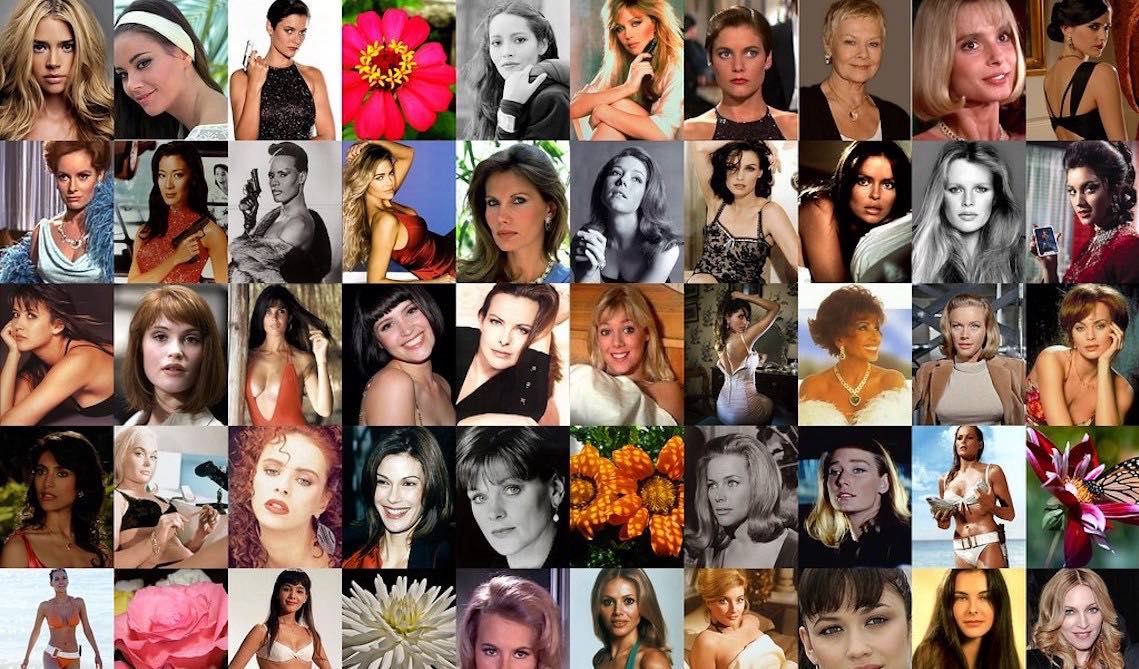In light of the exciting (and long-awaited) news that the new Bond girls will “feel like real people”, courtesy of Phoebe Waller Bridge’s collaboration for Bond 25, I am reminded of Laura Mulvey’s feminist film theory. At the fiftieth anniversary of the Bond franchise, it is the perfect time to reflect upon the evolution of “the Bond girl”, from 1962’s Dr No to the most recent Spectre in 2015. In Visual Pleasure and Narrative Cinema, Laura Mulvey coined the term ‘male gaze’, to define how women in film are represented from the perspective of a white, heterosexual male. Her theory implied cinema was a patriarchal and misogynist medium, in which women were sexualised and eroticised as objects of male desire. Mulvey describes the traditional exhibitionist role of women in cinema, who are “simultaneously looked at and displayed, with their appearance coded for strong visual and erotic impact so that they can be said to connote to-be-looked-at-ness”. Mulvey contends that “all too often, female bodies are shown to be objects designed to please men and conform to mainstream ideals of femininity”. This implies that a woman’s physical appearance must adhere to masculine expectations of attractiveness. Mulvey suggests that the male gaze is not only presented in the film’s narrative but acts as a lens through which the audience themselves perceive the film. This reinforces the uncomfortable idea that women in film can only occupy degrading roles and are generally prevented from portraying progressive characters.
The James Bond franchise frequently presents women as eroticised objects, existing merely for the hero’s pleasure. The stereotypical ‘Bond girl’ acts as a glamorous distraction for the male protagonist, adhering to the “erotic impact” that Mulvey mentions. Bond specialist Professor James Chapman confirms that Bond girls are there “purely for decoration… the girl is literally reduced to the level of an object”. In Goldfinger (1964) Bond dismisses ‘Dink’ (Margaret Nolan) from his conversation, by stating: “man talk”, before slapping her on the bottom. This explicitly sexist discrimination demonstrates the misogyny of Bond, who clearly views women as intellectually inferior. The male gaze is as unsubtle as ever in The Man with the Golden Gun (1974), as we see Roger Moore stare leeringly at Andrea Anders’ cleavage, before announcing: “tight in all the right places, not too many buttons”. And let’s not forget the ludicrously sexually suggestive names of the female characters. Laden with sexual connotations: “Pussy Galore”, “Honey Rider” and of course, “Octopussy”, overtly reference the female genitalia. This again seems solely for male titillation, reducing the female characters to the very essence of their femininity to entertain the men.
The objectification Chapman describes is perhaps most evident in Die Another Day, as the camera focuses on a half-naked Halle Berry, as she seductively emerges from the water. The scene directly alludes to the first ever Bond girl in Dr No (1962), featuring Ursula Andress in her iconic white bikini (1962). Berry’s image feels like a male fantasy, with her large breasts and heavy make-up seeming to exist solely for the male’s benefit and pleasure, as he watches in awe. The use of slow motion exaggerates her physical desirability, as the camera itself roams over her body as though attempting to savour it. The camera shares Bond’s gaze, presenting Berry as she appears to him, viewed through his binoculars. Through no choice of their own, even female audiences find themselves identifying with the dominant male character, as it is through his eyes that the action is presented. This results in a subjective male lens, and there is an uncomfortable sense of voyeurism, as the woman is closely scrutinised and magnified unknowingly. The extent to which the Bond girl is objectified as a spectacle is evident as Bond exclaims, “magnificent view”. His character looks at her the way one might enjoy a beautiful landscape; as an inanimate, dehumanised spectacle.
The poor representation of Bond women has continued into even the most recent films, with a particularly uncomfortable encounter in Skyfall (2012). The character of Severine discloses to Bond that she was a victim of sex-trafficking and is clearly vulnerable and mistrusting of men. However only moments later, Bond (creepily) watches her showering, before joining her, where he seduces her and they have sex. Severine is later tied up by the villain (Javier Bardem), with a glass of whisky balanced on her head. Bardem brutally shoots her in the head, to which an unperturbed Bond merely responds with “that’s a waste of good Scotch”. The misogyny is blatant here, as the female character is shown as being no more than a brief moment of pleasure for Bond: ultimately disposable and irrelevant to the plot.
There was much anticipation for Monica Bellucci’s Bond girl in Spectre (2015), as at 51, she was the oldest actress to play the role. Previous Bond girls were renowned for being significantly younger than the male lead: in Live and Let Die, 45-year-old Moore is more than twice the 22-year old’s age, and in For Your Eyes Only, the 23-year-old actress a staggering 30 years his junior. Bellucci had been long awaited as “revolutionising” the Bond girls with her refreshing sophisticated maturity, however sadly this was not the case. Not only does Craig’s Bond recycle Brosnan’s reaction to Halle Berry, (“lovely view”), but Bellucci’s screen time is insultingly brief, appearing for no more than a few minutes in total. The power imbalance between Bond and Bellucci is evident as Bond assertively walks towards her, forcing her to retreat backwards until she is up against the wall and submitting to his sexual advances. Little White Lies’ Editor, David Jenkins acknowledged: ‘Despite what the build-up led you to believe, Bellucci’s part is in-keeping with the antiquated role of the Bond girl. He needs some information from her, so he is straight into her bed and then straight out of it again.’ The last we see of Bellucci’s character is in bed wearing a corset and suspenders, saying “don’t leave me James”. Variety’s Catherine Bray described Bellucci’s character as “a criminal missed opportunity”. What could have been the chance to show an independent and strong-willed woman instead conforms to its old tropes of the damsel in distress in need of rescue. Audiences complained of being “let down” by false promises of a revolutionary Bond girl, as in 24 films the degrading female part remains ultimately the same.
If anyone can bring feminism to the Hollywood blockbuster, it’s Phoebe. Her spectacular Fleabag expertly shatters old patriarchal systems and reclaims female agency in a bold and empowering way. The signature trope of breaking the fourth wall communicates her innermost thoughts and desires to the audience, allowing us to completely empathise and identify with the female protagonist. Mulvey claims that “the male figure cannot bear the burden of sexual objectification”: the role of erotic object given solely to women, on the basis that it was too degrading for a man to be subjected to voyeurism. Throughout the series, Waller-Bridge’s character frequently fantasises about and lusts after various different men, refreshingly representing women as desiring and sexual beings, and not simply passive objects of male desire. Waller-Bridge subverts and reappropriates the gaze, by framing the male body for erotic contemplation and privileging female desire. I am very excited to see how Waller-Bridge’s feminist wit translates onto the big screen, as after half a century it is about time “the Bond Girl” shakes things up and stirs a revolution.
‘Fifty Years of Bond Girls and The Male Gaze’ is an article written by Gala Woolley. You can follow Gala on Twitter or LinkedIn.

